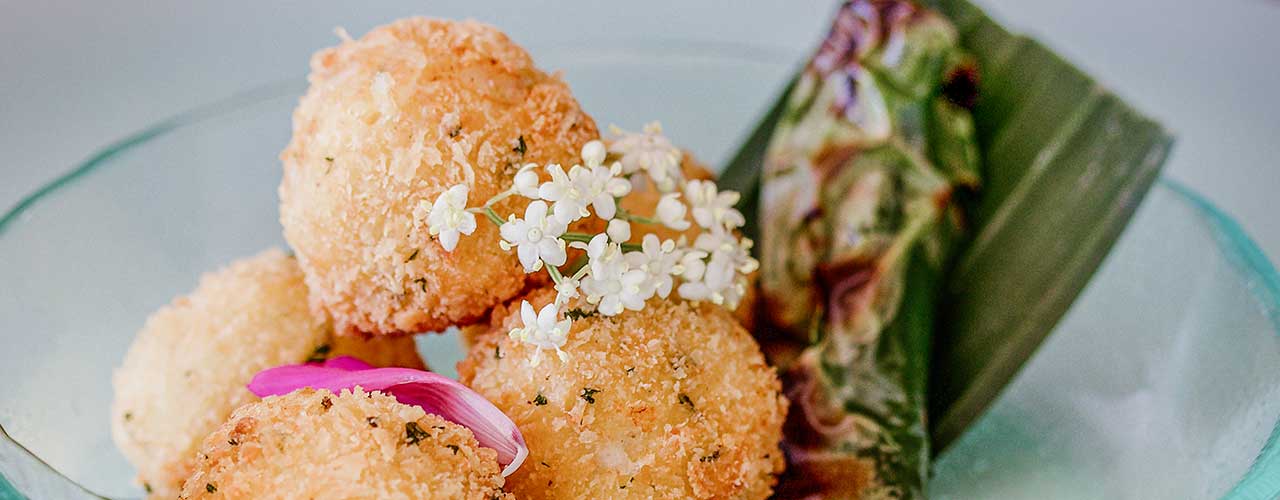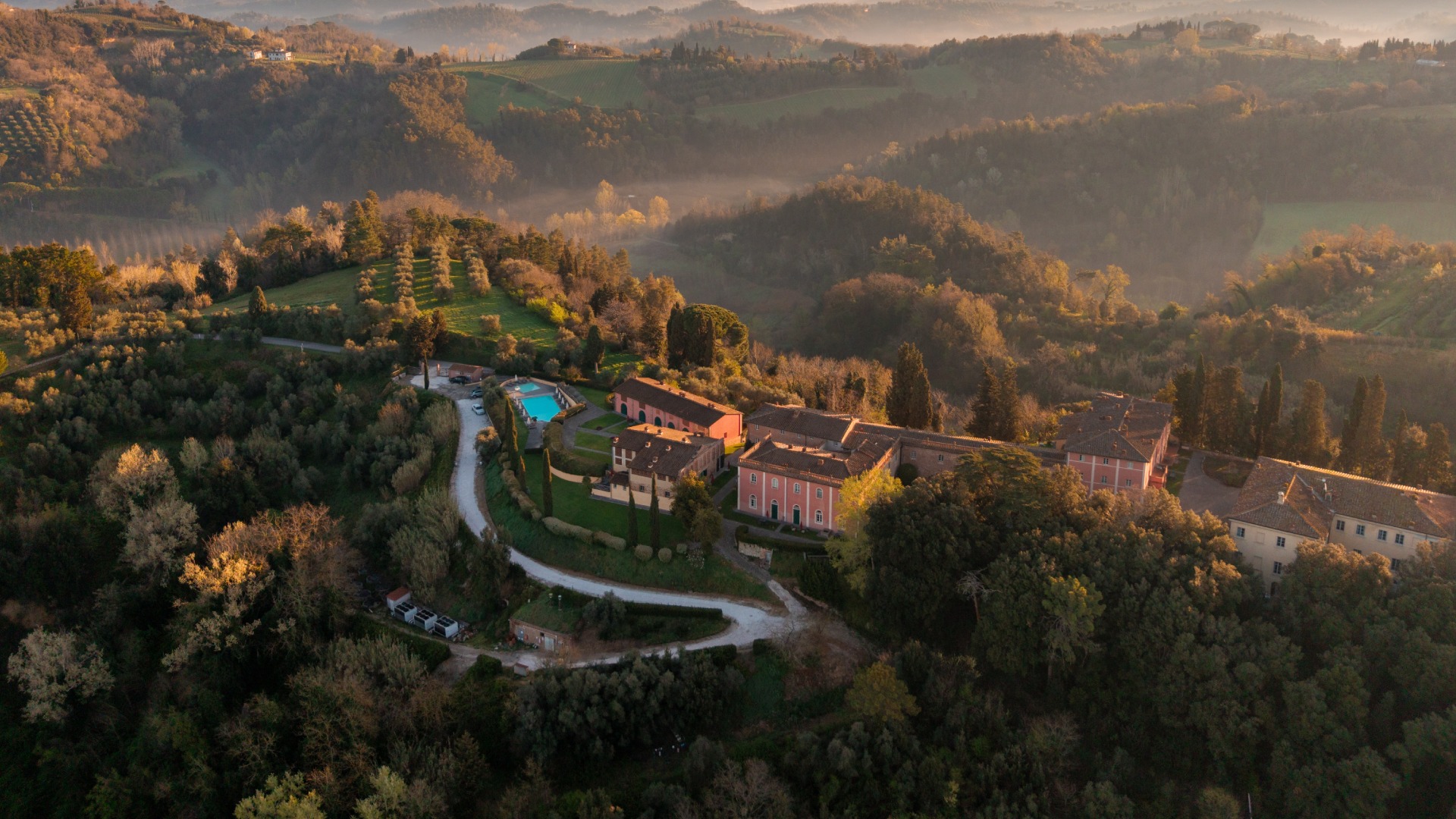Kandara’s acclaimed Executive Chef Joseph shares an article (and recipe) about the popular Spanish salted fish, Bacalao, that he recommends you pair with a Chablis from France.
Bacalao ((bak-kah-lah-oh) is made from salted cod first introduced to Basque sailors around 1000 AD by the Vikings. “Stockfish” as the Vikings would call it had been a staple in their cuisine dating back to the early Middle Ages.
Codfish consists of 18% protein and once dried reaches almost 80% protein composition. This high protein preserved fish was crucial in the Vikings’ ability to sail the North winds as far as Nova Scotia, fishing and raiding along the way. Undoubtedly the introduction of salted codfish was an “industry changer” for the fishermen during a time without refrigeration.
Across Europe, you will find different names for the prepared fish. In France it is called “Morue salee,” In Italy depending on how it is prepared it can be called “Merluzzo, Baccalo”, or even just “Stockfish” as the Vikings referred to it. The Portuguese call it “Amigo fiel- faithful friend,” and are said to have over 1000 different ways of preparing it.
Here in Indonesia, we don’t have access to salted codfish, but we do have Ikan Asin, the Indonesian version of this Scandinavian staple.
In addition to the Dutch, Chinese and Arabic traders that settled Indonesia, the Portuguese were instrumental in bringing Christianity to the country while trading spices and other commodities. Naturally, they must have brought the art of preserving fish with them. Yet in doing research on the topic, I discovered that Ikan Asin (salted fish) has been widely consumed in Java since the ancient Mataram empire period 1576-1755 AD and first written about in documents dating back to 940 AD.
Different from Bacalao, Ikan Asin Is made from any fish but most commonly from Ikan Teri a small salt water fish with many bones. And many bones means lots of drama in the preparation of Bacalao.
Craving Bacalao we decided to skip the bone drama and take our version of Bacalao to the next level by starting completely from scratch!
We salt-cured butterfish; a local meaty white fish rich in flavour with minimal bones for several days to create our signature Ikan Asin Croquettes at Karma Beach. They have been a top-selling starter with local and European guests since their debut on the menu early last year!
If you are lucky enough to have access to salted cod, you can skip the curing part of the recipes to follow.
And if you would like to pair the dish with a wine, I recommend a Chablis from France. The crisp unoaked yet complex composition of the wine is a perfect pairing!
‘Selamat Makan’
Chef Joseph, Karma Kandara

Ikan Asin Croquettes, fiery sambal hijau aioli
Salt Cured Butterfish
Ingredients:
-
Until the fish is completely and heavily covered
Technique:
In a mixing bowl combine the sugar and salt. Set aside.
Cover the bottom of a deep dish with 1/3rd of the salt. Place the fish on top of the salt and cover completely with the remaining 2/3rd salt. Pat firmly into the flesh of the fish.
Cover with plastic wrap and place in the fridge for 2 days or until the salt becomes liquid from the moisture releasing from the fish. At this point the texture of the flesh of the fish will be firm.
Remove from salt, rinse under cold water. Pat dry with paper towel and place on a cooling rack in the fridge uncovered for 7-10 days to dry out.
The preserved fish will keep in the fridge for up to one week or for several months in the freezer.
Prior to using the fish you need to soak it in cold water in the fridge for 24 hours changing the water at least two times to extract the salt from the flesh.
If you are using traditional Salted Cod, soak in water for three days, changing the water two times every day.
Remove from the water and pat dry.
Croquette Filling
Ingredients:
-
one recipe
Technique:
Place the potatoes, onions, garlic, bay leaf, thyme, milk and white pepper in a heavy bottom pot and simmer on low heat until the potatoes are 70% cooked.
Add the salted butterfish pieces and continue to cook until the potatoes are cooked through.
Remove from stove and strain to separate the fish and veggies from the milk. Reserve some of the milk to adjust consistency.
Remove the bay leaves and thyme from the mixture and discard. Place the remaining ingredients in a kitchen mixer fitted with the paddle attachment. Beat on low-medium speed until it resembles mashed potatoes.
If the mixture is too dry, use some of the reserved cooking milk to adjust the consistency.
Slowly drizzle in the extra virgin olive oil and taste for seasoning. You may need to add a little bit of salt at this point. The finished product should have a slightly salty flavour rounded out with the underlying components of potato, onion, herbs and garlic.
Let cool and roll into 20 gram balls and place on a sheet tray in the freezer to set up.
Prepare the bread crumb coating
Ingredients:
In three separate containers:
- All-purpose flour + salt, white pepper and half Espelette chili powder.
- Whipped eggs + salt & white pepper
- Panko Bread Crumbs, finely chopped parsley, salt, white pepper and the remaining Espelette chili powder: mix
Technique:
Using standard breading procedure roll the semi frozen croquette balls in the flour evenly coating on all sides.
Remove from the flour and gently shake off any excess.
Place the floured ball into the egg wash and evenly coat.
Remove from egg wash and roll in the prepared bread crumbs ensuring that the entire ball is evenly coated without any bald spots*
Place the coated ball onto a parchment paper lined sheet tray and continue to repeat these steps until all the balls have been evenly coated.
Once coated, wrap the tray and store in the freezer until ready to use.
*Note: It is very important to ensure that the ball is entirely coated in panko otherwise when you fry it, the ball will explode the filling into the fry oil and you will be left with only an empty semi-shell of a ball.
** Second Note: Standard breading can get messy fast. I recommend being ambidextrous with this process.
If you are right-handed, use that hand to roll the ball in the flour & bread crumbs and use your left hand to roll the ball in the egg wash. If you are left-handed reverse the rolls .… No pun intended!
Frying the Balls:
In a heavy bottom pot heat up vegetable oil to 191 degrees Celsius.
Using a slotted spoon, gently place each ball in the fryer one by one until they become GB&D “Golden Brown & Delicious!”
With the slotted spoon gently remove the balls from the hot oil and place on a paper towel lined tray to absorb the excess oil left behind.
Serve with Sambal Hijau aioli or any other flavour aioli you choose. Commonly in Spain they are served with a saffron aioli. Think garlicy flavours!
Sambal Hijau Aioli
Ingredients:
Technique:
In a saute pan over medium heat warm the salad oil and add the shallots and saute until soft. Add the garlic and continue to saute until almost golden brown. Add the chilies and kaffir lime leaves and continue to cook until soft and thick. Season to taste with salt and white pepper.
Remove from the heat and transfer to a blender. Puree until it becomes a paste. Let cool to room temperature in the blender.
Once cooled to room temperature add the egg yolks, Dijon mustard and lime juice. Puree again until smooth.
Slowly drizzle in the vegetable oil to make an emulsion. If the aioli becomes too thick, you can add a touch of water to help it along in the blender.
Once the oil is incorporated, turn off the blender and adjust seasoning to taste with salt and white pepper.
The aioli should be rich with a spicy green chili flavour with a clean acidity in the finish. Reserve in the chiller until ready to use.








